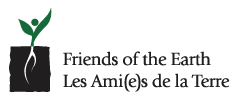Falling For Bees
There’s one thing that Mother Nature hasn’t yet wreaked havoc with and that’s bringing the cooler comfortable temperatures for fall, like clockwork. You unpack that sweater from the bottom drawer and think about dragging out your summer stowaway bins from the basement. On second thought, maybe Indian summer is around the corner?
Unlike us, bees take their cues from nature and their survival can’t depend on second thoughts. As winter draws near, the new bumble bee queens will be emerging and they have to eat ravenously, storing calories for the winter to come. When the weather gets chilly, they look for safe places to curl up and go to sleep until spring comes. The old queen, all the workers and the males die shortly thereafter, their job being done.
If you have a garden full of bright, bee friendly plants like sunflowers, lavender, daisies and marigolds, kudos, you have been helping nourish bees throughout spring and summer and now the fall. Bees continue to forage for nectar and pollen well into the fall seeking a variety of blooms. They sometimes travel miles away from home. Help bees go the extra mile by providing them with a fresh water source. Simply gather some rocks into a small glass dish, fill it with water, being careful not to cover the rocks so the bees have a landing pad.

Have a weedy backyard? It’s best to leave it alone. Bees love walking on the wild side. Allow native flowers, dandelions and thistles to flourish. Wildflowers are also a bee favourite. If your yard’s unsightliness is getting your neighbour down, try to appeal to her inner bee-nevolence, that way your lack of gardening prowess can turn into an eco-warrior project. At the very least, leave a small patch untamed. Make friends with the weeds. Bees will be grateful, including bumble bees and solitary bees that nest in the ground. Do away with mulch or at least leave an area mulch-free. Check out this extensive list of tips for selecting native species of wildflowers and other plants.
Only have a city balcony? Arrange some late blooming potted plants like mums, zinnias, sedum and goldenrod to create an urban bee friendly habitat. Retail flyers are loaded with special offers on fall plants right now (make sure to ask about pesticides though). If you can’t remember specific species, focus on the colours that attract bees, blue, purple and yellow. Also think of single rather than double blooms. Bees are attracted to single blooms which offer more of that sugary sweet stuff they love.

Try your hand at a balcony herb garden. The fragrance of the herbs will do a wonderful job of attracting bees. Create diversity by mixing in catmint (cats love them too), lemon balm, fennel, sage, rosemary, and thyme. Foodies and bees alike will be your new BFF!
All of this is for naught if you don’t have plants that are free of neonicotinoids, the class of pesticides connected to bee declines. Ontario has restricted neonics used for treated corn and soy seeds for agriculture. But there’s no restrictions for horticultural use – over half the flowering plants tested by Friends of the Earth across North America have shown bee harmful levels of neonics. RONA, Home Depot, Lowes and other garden centre retailers are making commitments to label neonic-contaminated plants and to require their suppliers to stop the use. But it will take continuing pressure from concerned gardeners to make sure they deliver. As a consumer and a gardener, make an effort to ask questions and exercise your influence in the marketplace.
Fall for bees, they need us almost as much as we need them.




